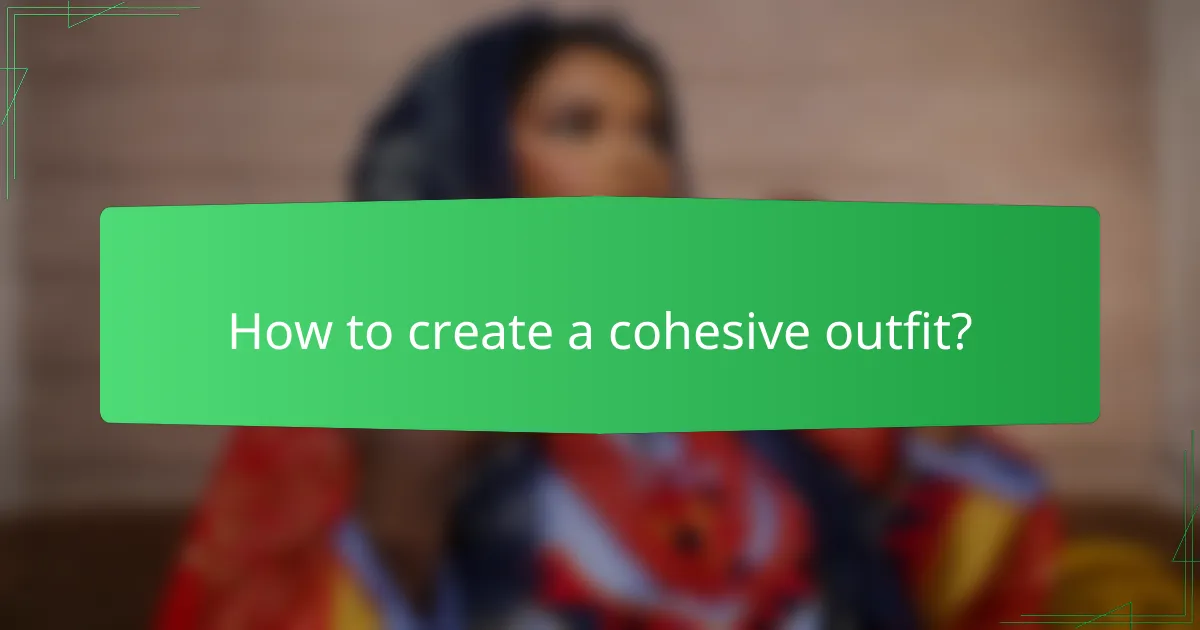Finding your signature style is an essential aspect of personal branding that allows you to express your unique identity and values. By selecting outfits that resonate with both your personal preferences and your target audience, you can create a memorable image that enhances your confidence. Embrace self-acceptance and experimentation to discover a look that truly reflects who you are.

How to define your personal brand in Canada?
Defining your personal brand in Canada involves understanding your unique qualities and how they resonate with your audience. It requires a clear articulation of your values, strengths, and the image you want to project in both personal and professional contexts.
Identify core values
Your core values are the foundation of your personal brand. They reflect what you stand for and guide your decisions and actions. Consider values like integrity, creativity, or community involvement that resonate with you and your audience.
To identify your core values, list traits that are important to you and prioritize them. This will help you stay authentic and consistent in your branding efforts.
Analyze target audience
Understanding your target audience is crucial for effective personal branding. Identify who you want to connect with, whether they are potential employers, clients, or followers. Consider their demographics, interests, and needs.
Conduct surveys or engage in conversations to gather insights about your audience. This information will help tailor your brand message to resonate with them more effectively.
Research competitors
Analyzing competitors can provide valuable insights into how to position your personal brand. Look at individuals in your field who have successfully established their brands. Note their strengths, weaknesses, and the strategies they use.
Identify gaps in their branding that you can fill or unique angles that differentiate you. This will help you carve out a niche in the Canadian market.
Create a unique value proposition
Your unique value proposition (UVP) is a clear statement that explains how you differ from others in your field. It should communicate the benefits you offer and why someone should choose you over competitors.
To create a compelling UVP, combine your core values, audience insights, and competitive analysis. Aim for clarity and conciseness, ensuring it resonates with your target audience and reflects your personal brand authentically.

What outfits enhance personal branding?
Outfits that enhance personal branding are those that reflect your identity and values while resonating with your target audience. By carefully selecting clothing that aligns with your personal and professional goals, you can create a memorable and authentic image.
Choose signature colors
Signature colors play a crucial role in personal branding, as they evoke emotions and convey messages about your personality. Consider selecting a palette that complements your skin tone and aligns with the image you wish to project. For instance, bold colors like red can signify confidence, while softer tones like blue may convey trustworthiness.
To establish a cohesive look, aim for a few primary colors that you can mix and match across various outfits. This not only simplifies your wardrobe choices but also reinforces your brand identity.
Select versatile wardrobe staples
Wardrobe staples are essential pieces that can be styled in multiple ways, making them invaluable for personal branding. Items such as a tailored blazer, classic white shirt, or well-fitted jeans can be dressed up or down depending on the occasion. Investing in quality staples ensures longevity and a polished appearance.
When selecting these staples, focus on fit and fabric. Well-fitted clothing in breathable materials will enhance your comfort and confidence, allowing you to present your best self in any setting.
Incorporate local fashion trends
Incorporating local fashion trends into your outfits can help you connect with your community and demonstrate cultural awareness. Stay informed about popular styles in your area, whether through social media, local boutiques, or fashion events. This not only keeps your wardrobe fresh but also shows that you are engaged with your surroundings.
However, balance is key. While it’s beneficial to embrace local trends, ensure that they align with your personal style and branding. Avoid trends that feel forced or uncomfortable, as authenticity is vital in personal branding.

How to gain confidence in your style?
Gaining confidence in your style involves understanding your personal preferences and embracing them. By focusing on self-acceptance and experimenting with various outfits, you can develop a signature look that reflects who you are.
Practice positive self-talk
Positive self-talk is essential for building confidence in your style. Replace negative thoughts about your appearance with affirmations that highlight your strengths and unique qualities. For example, remind yourself of the outfits you feel good in and the compliments you’ve received.
Consider creating a list of affirmations to recite daily. Phrases like “I look great in this outfit” or “My style is uniquely mine” can help reinforce a positive self-image. Consistency in this practice can significantly boost your confidence over time.
Seek feedback from trusted friends
Getting feedback from trusted friends can provide valuable insights into your style choices. Choose friends whose opinions you respect and who understand your personal taste. Ask them for honest feedback on outfits you’re considering or styles you want to try.
When receiving feedback, focus on constructive criticism that can help you refine your look. Consider their suggestions seriously, but remember to stay true to your personal preferences. This balance can help you grow more confident in your style decisions.
Experiment with different looks
Experimenting with different looks is a practical way to discover what works best for you. Try mixing and matching clothing items you already own or explore new styles that you haven’t worn before. This could include different colors, patterns, or accessories that you might not typically choose.
Set aside time each week to try out new outfits or styles. Take photos of your favorite combinations to track what makes you feel confident. This experimentation can lead to a clearer understanding of your signature style and enhance your overall confidence.

What are the best e-commerce platforms for personal branding?
The best e-commerce platforms for personal branding offer unique opportunities to showcase your style and personality through curated selections. These platforms allow you to find distinctive pieces that resonate with your brand identity, helping you stand out in a crowded market.
Shop on Etsy for unique pieces
Etsy is an excellent platform for discovering unique, handmade, or vintage items that can enhance your personal brand. With a focus on individuality, you can find everything from custom jewelry to artisanal clothing that reflects your style.
When shopping on Etsy, consider supporting small businesses and artisans. This not only helps you find one-of-a-kind pieces but also aligns your brand with ethical consumerism.
Explore ASOS for trendy outfits
ASOS is a go-to destination for trendy clothing that caters to a variety of styles and preferences. With a vast selection of contemporary fashion, you can easily find outfits that align with current trends while expressing your personal flair.
Utilize ASOS’s filtering options to narrow down choices by size, color, and style. Keep an eye out for seasonal sales and discounts, which can help you build your wardrobe without overspending.
Utilize Poshmark for second-hand finds
Poshmark is a popular platform for buying and selling second-hand clothing, making it a great option for budget-conscious shoppers. You can find gently used items that fit your style while promoting sustainable fashion practices.
When using Poshmark, engage with the community by following other users and sharing listings. This can enhance your shopping experience and help you discover unique pieces that align with your personal brand.

How to create a cohesive outfit?
Creating a cohesive outfit involves selecting pieces that complement each other in style, color, and texture. Focus on a unified theme or color palette to ensure all elements work together harmoniously.
Mix and match textures
Incorporating various textures can add depth and interest to your outfit. Consider pairing smooth fabrics like silk with rougher materials such as denim or wool to create contrast. Aim for a balance that feels intentional rather than chaotic.
For example, a chunky knit sweater can look great over a sleek leather skirt. Experiment with different fabrics to see what combinations resonate with your personal style.
Balance proportions
Balancing proportions is key to achieving a well-structured look. If you wear a loose top, consider pairing it with fitted bottoms to create a flattering silhouette. Conversely, a tailored blazer can be paired with relaxed-fit trousers for a chic ensemble.
A general rule is to keep one piece fitted and the other more relaxed. This approach helps maintain visual interest and prevents the outfit from appearing overwhelming.
Accessorize thoughtfully
Accessories can elevate an outfit and reinforce your personal style. Choose accessories that complement your clothing without overpowering it. For instance, if your outfit features bold patterns, opt for simpler jewelry to maintain balance.
Consider the occasion when selecting accessories. A structured handbag and classic heels work well for professional settings, while playful earrings and a crossbody bag suit casual outings. Aim for a few statement pieces rather than overloading on accessories.

What role does social media play in personal branding?
Social media is a powerful tool for personal branding, allowing individuals to showcase their style and connect with a wider audience. By curating content that reflects personal values and aesthetics, users can build a distinct online identity that resonates with followers.
Showcase outfits on Instagram
Instagram serves as a visual platform ideal for showcasing outfits and personal style. Users can post high-quality images of their clothing combinations, using relevant hashtags to reach a broader audience. Consistency in posting and maintaining a cohesive aesthetic can significantly enhance visibility and engagement.
Consider creating a dedicated theme for your Instagram feed, such as color coordination or seasonal styles. This not only attracts followers but also reinforces your personal brand. Engaging with other fashion accounts through comments and collaborations can further expand your reach.
Engage with followers on TikTok
TikTok offers a dynamic space for engaging with followers through short, creative videos. Users can share outfit ideas, styling tips, or behind-the-scenes looks at their fashion choices, fostering a sense of community. The platform’s algorithm favors authentic content, making genuine interactions crucial for building a loyal following.
Utilize trends and challenges to showcase your style while staying relevant. Responding to comments and participating in duets can enhance engagement. Regularly posting content that reflects your personality will help maintain interest and encourage followers to connect with your brand on a deeper level.
